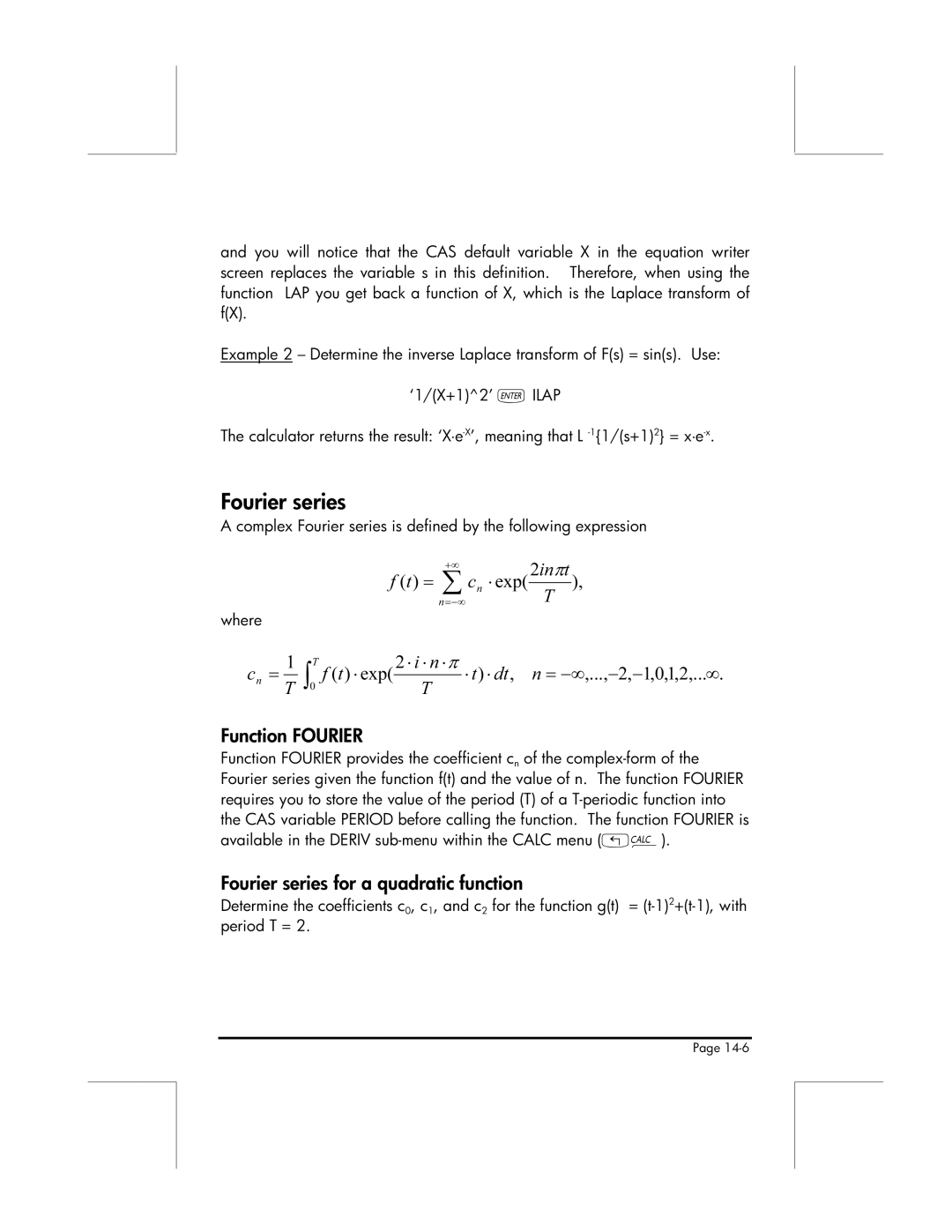
and you will notice that the CAS default variable X in the equation writer screen replaces the variable s in this definition. Therefore, when using the function LAP you get back a function of X, which is the Laplace transform of f(X).
Example 2 – Determine the inverse Laplace transform of F(s) = sin(s). Use:
‘1/(X+1)^2’ ` ILAP
The calculator returns the result:
Fourier series
A complex Fourier series is defined by the following expression
+∞ |
| 2inπt |
| |
f (t) = ∑ cn | ⋅ exp( | ), | ||
| ||||
n=−∞ |
| T | ||
where
cn | = | 1 | ∫0T f (t) ⋅ exp( | 2 ⋅ i ⋅ n ⋅π | ⋅ t) ⋅ dt, n = −∞,...,−2,−1,0,1,2,...∞. |
T |
| ||||
|
|
| T | ||
Function FOURIER
Function FOURIER provides the coefficient cn of the
Fourier series for a quadratic function
Determine the coefficients c0, c1, and c2 for the function g(t) =
Page
